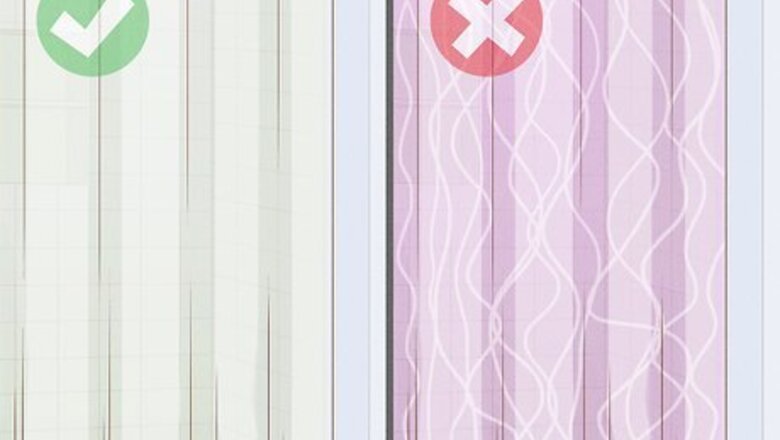
views
Avoiding Mildew
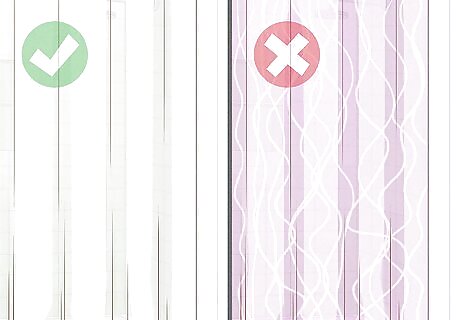
Use a shower curtain or liner with a smooth, consistent surface. Shower curtains with raised or etched patterns may allow moisture or water to collect in certain areas; whereas a smooth curtain will allow water to glide down into the drain.
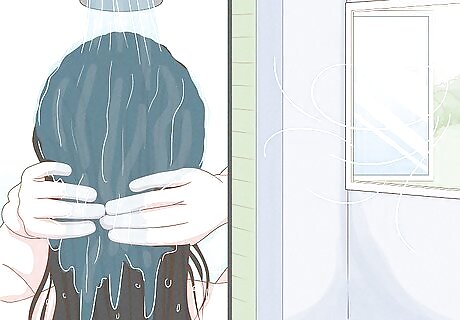
Ventilate your bathroom during and after your shower. This procedure will help your bathroom dry at a faster rate and help eliminate moisture buildup. Open the window in your bathroom or turn on the ventilator fan to help remove excess moisture.

Open your shower curtain wide enough for air circulation. Once you get out of the shower, leave the curtain partially open. This will allow any trapped moisture on the wet side of the shower curtain to escape and dry faster. Shake out the liner and separate any folds in your shower curtain to release trapped moisture. Also consider putting an empty laundry basket or a hook in the tub to hold the wet shower curtain away from the tub side.

Hang the shower curtain on the outside of your bathtub. This will prevent mildew from forming on the area that clings to the tub. Move the shower curtain to the outside of the bathtub only after it has dried partially to prevent water from dripping onto your bathroom floor.
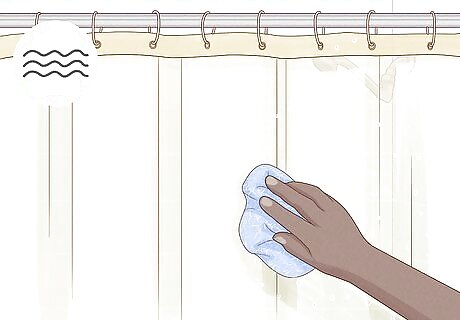
Dry your shower curtain after each use. This will help prevent soap scum from forming on your shower curtain in addition to mildew. Use a dry towel or rag to remove water from the wet side of your shower curtain after you shower.
Creating a Mildew Barrier
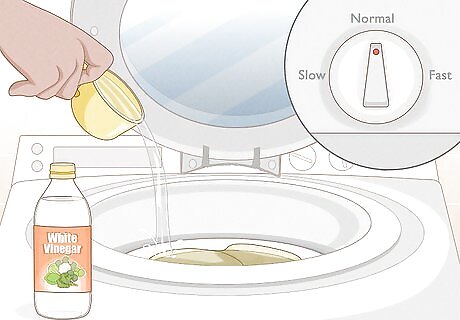
Wash the curtain with detergent and vinegar. Put half the recommended amount of detergent in your washing machine. Add 1 cup (240 mL) of white vinegar. Toss in your shower curtain and a couple of old towels, and wash them on a normal cycle.
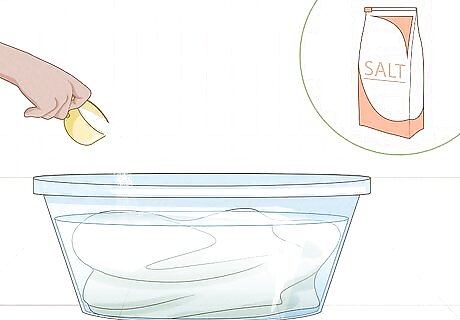
Fill your tub with water and 1 cup (300 g) of salt. Plug the drain and add the salt. Then, let the water run until it is deep enough to cover the curtain.
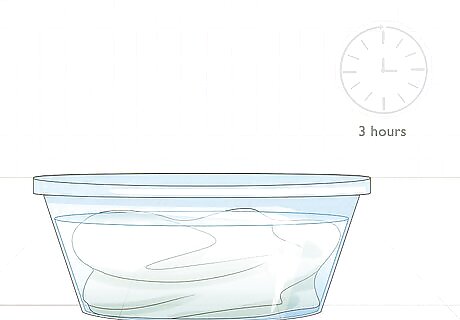
Let the curtain soak for 3 hours. Put your curtain in the tub and make sure it is fully submerged. Allow it to soak in the salt water solution. The salt water prevents mildew by creating a barrier on the shower curtain.
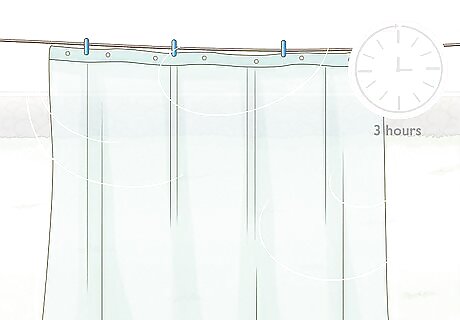
Air-dry the shower curtain. After 3 hours, take the curtain out of the tub. Avoid rinsing off the salt water. Hang up the curtain and let it dry before showering.
Cleaning the Curtain
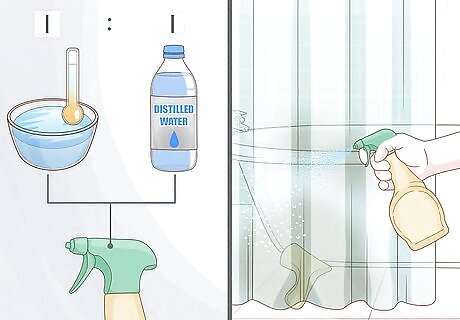
Obtain or prepare a cleaning solution for your shower curtain. You can use a commercial bathroom-cleaning product that specializes in preventing mildew growth or make your own cleaning solution. If you use a commercial cleaning product, use the product as directed by the manufacturer. To make a natural cleaning solution, mix together 1 part warm water and 1 part distilled white vinegar and pour the mixture into a spray bottle. You can substitute bleach for vinegar; however, you will be required to properly ventilate your bathroom after using the bleach mixture to prevent adverse health effects from the toxic fumes.
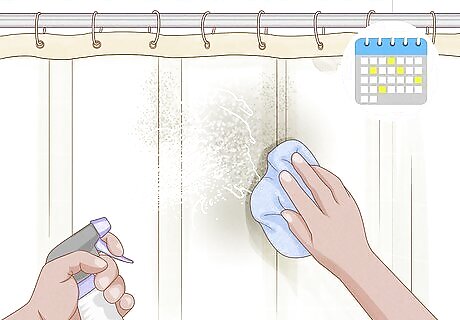
Clean your shower curtain at least once per week. This procedure will help disinfect your shower curtain and eliminate any bacteria that may contribute to the growth of mildew. Spray your cleaning solution over the entire surface of your shower curtain. Use a clean, dry towel or rag to spread the cleaning solution over the entire surface of the shower curtain.
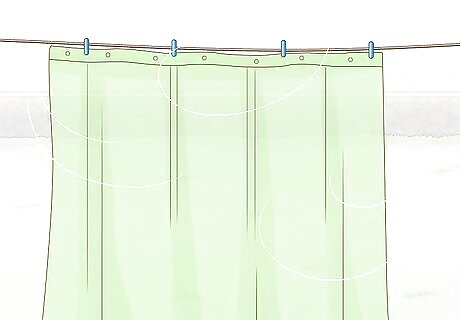
Let the shower curtain air dry after cleaning it. Refrain from rinsing your shower curtain immediately after you have cleaned it to allow the properties from the solution to work completely.




















Comments
0 comment